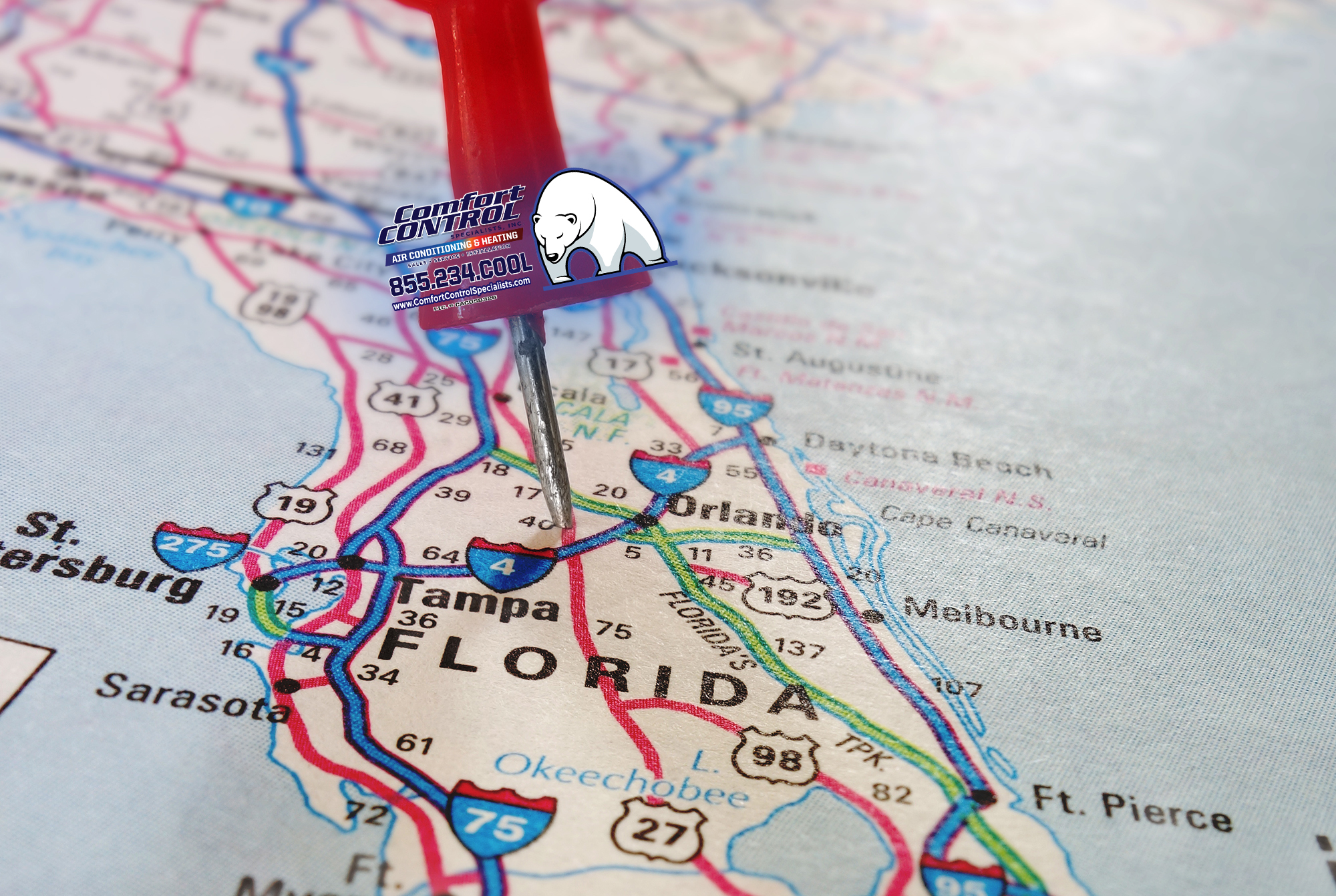[vc_row][vc_column][vc_column_text]Moving to Central Florida can be a great decision for those seeking warm, sunny weather and an active outdoor lifestyle. However, the climate in Central Florida can be quite different from other areas of the state. Before making the move, it is important to understand the historical weather patterns in the region, as well as how they may affect energy costs for homes. In this blog post, we will explore the historical weather in Central Florida, including Brooksville, Spring Hill, and New Port Richey, and how it may impact energy costs for potential homebuyers. We will also compare and contrast energy costs in Central Florida with those in North and South Florida.
Source: www.visitflorida.com
Climate in Central Florida
Central Florida is located in the southeastern part of the United States, with a sub-tropical climate. The region experiences long, hot summers with high humidity levels and frequent thunderstorms. The summer months in Central Florida typically run from June to September, with temperatures reaching the mid to high 90s during the day, and cooling off to the mid to high 70s at night.
The winter months in Central Florida are generally mild, with temperatures ranging from the high 40s to the low 70s. While snow is rare in Central Florida, there can be occasional freezes that can damage crops and landscaping.
Historical Weather in Brooksville, Florida
Brooksville, Florida is a small city located in Hernando County, in the west-central part of the state. The city is known for its historic architecture and charming downtown area, as well as its warm weather. The average high temperature in Brooksville during the summer months is around 91 degrees Fahrenheit, while the average low temperature is around 72 degrees Fahrenheit. The humidity levels in Brooksville can range from 70% to 90%, making it feel much hotter than the actual temperature.
During the summer months, Brooksville experiences frequent thunderstorms, with an average of 16 thunderstorms per year. The highest frequency of thunderstorms occurs in July and August. These thunderstorms can be intense, with heavy rainfall, strong winds, and lightning.
In terms of energy costs, air conditioning is one of the biggest energy users in a home or business in Brooksville. During the summer months, the AC unit may run constantly to maintain a comfortable temperature, resulting in higher energy bills.
Click here to learn more about Brookville.
Historical Weather in Spring Hill, Florida
Spring Hill, Florida is a suburb located in Hernando County, just north of Brooksville. The city is known for its many parks and outdoor activities, as well as its warm weather. The average high temperature in Spring Hill during the summer months is around 92 degrees Fahrenheit, while the average low temperature is around 73 degrees Fahrenheit. The humidity levels in Spring Hill can range from 70% to 90%, making it feel much hotter than the actual temperature.
Like Brooksville, Spring Hill experiences frequent thunderstorms during the summer months, with an average of 16 thunderstorms per year. The highest frequency of thunderstorms occurs in July and August. These thunderstorms can be intense, with heavy rainfall, strong winds, and lightning.
In terms of energy costs, air conditioning is one of the biggest energy users in a home or business in Spring Hill. During the summer months, the AC unit may run constantly to maintain a comfortable temperature, resulting in higher energy bills.
- Click the links below to learn more about Spring Hill:
Visit Florida Site – Spring Hill
Hernando County – Spring Hill
Historical Weather in New Port Richey, Florida
New Port Richey, Florida is a city located in Pasco County, in the southwestern part of the state. The city is known for its waterfront parks and outdoor activities, as well as its warm weather. The average high temperature in New Port Richey during the summer months is around 91 degrees Fahrenheit, while the average low temperature is around 73 degrees Fahrenheit. The humidity levels in New Port Richey can range from 70% to 90%, making it feel much hotter than the actual temperature.
During the summer months, New Port Richey experiences frequent thunderstorms, with an average of 15 thunderstorms per year. The highest frequency of thunderstorms occurs in August. These thunderstorms can be intense, with heavy rainfall, strong winds, and lightning.
In terms of energy costs, air conditioning is also one of the biggest energy users in a home or business in New Port Richey. During the summer months, the AC unit may run constantly to maintain a comfortable temperature, resulting in higher energy bills.
Click here to learn more about New Port Richey.
Comparing Energy Costs in North, Central, and South Florida
While the climate in Florida is generally warm and sunny throughout the year, there are some differences in energy costs depending on the region. In North Florida, for example, the winter months can be cooler, and heating costs may be a bigger factor in energy bills. In South Florida, the climate is more consistently warm throughout the year, with higher humidity levels, which can affect energy costs.
In terms of air conditioning costs, Central Florida and South Florida tend to have higher energy bills due to the long, hot summers and high humidity levels. North Florida, on the other hand, may have higher heating costs in the winter months. However, there are also other factors to consider, such as the age and efficiency of the HVAC system in the home.
Tips for Reducing Energy Costs in Central Florida
If you are considering moving to Central Florida, there are some steps you can take to help reduce energy costs in your home.
1. Invest in an Energy-Efficient HVAC System
One of the best ways to reduce energy costs in Central Florida is to invest in an energy-efficient HVAC system. Look for units with high SEER ratings (Seasonal Energy Efficiency Ratio), which can help reduce energy usage and lower your utility bills.
2. Use Ceiling Fans
Ceiling fans can help to circulate air in the home and create a cooler, more comfortable environment. This can help reduce the need for the AC unit to run constantly, which can lower energy costs.
3. Install Energy-Efficient Windows and Doors
Energy-efficient windows and doors can help to keep the home insulated and reduce the amount of air conditioning needed to maintain a comfortable temperature.
4. Use Window Treatments
Using window treatments such as curtains or blinds can help to block out the sun’s heat and keep the home cooler.
5. Schedule Regular HVAC Maintenance
Regular maintenance on your HVAC system can help ensure that it is running efficiently and reduce the risk of breakdowns or costly repairs.
Conclusion
Central Florida is a region known for its warm, sunny weather, but it can also come with high humidity levels and frequent thunderstorms. Understanding the historical weather patterns in cities such as Brooksville, Spring Hill, and New Port Richey can help potential homebuyers prepare for the weather and anticipate energy costs. By taking steps to reduce energy usage in the home, such as investing in an energy-efficient HVAC system or using ceiling fans, homeowners can help lower their energy bills and create a more comfortable living environment.
If you have any questions, don’t hesitate to contact the Comfort Control Specialists for a comprehensive AC inspection and tune-up.[/vc_column_text][/vc_column][/vc_row]



